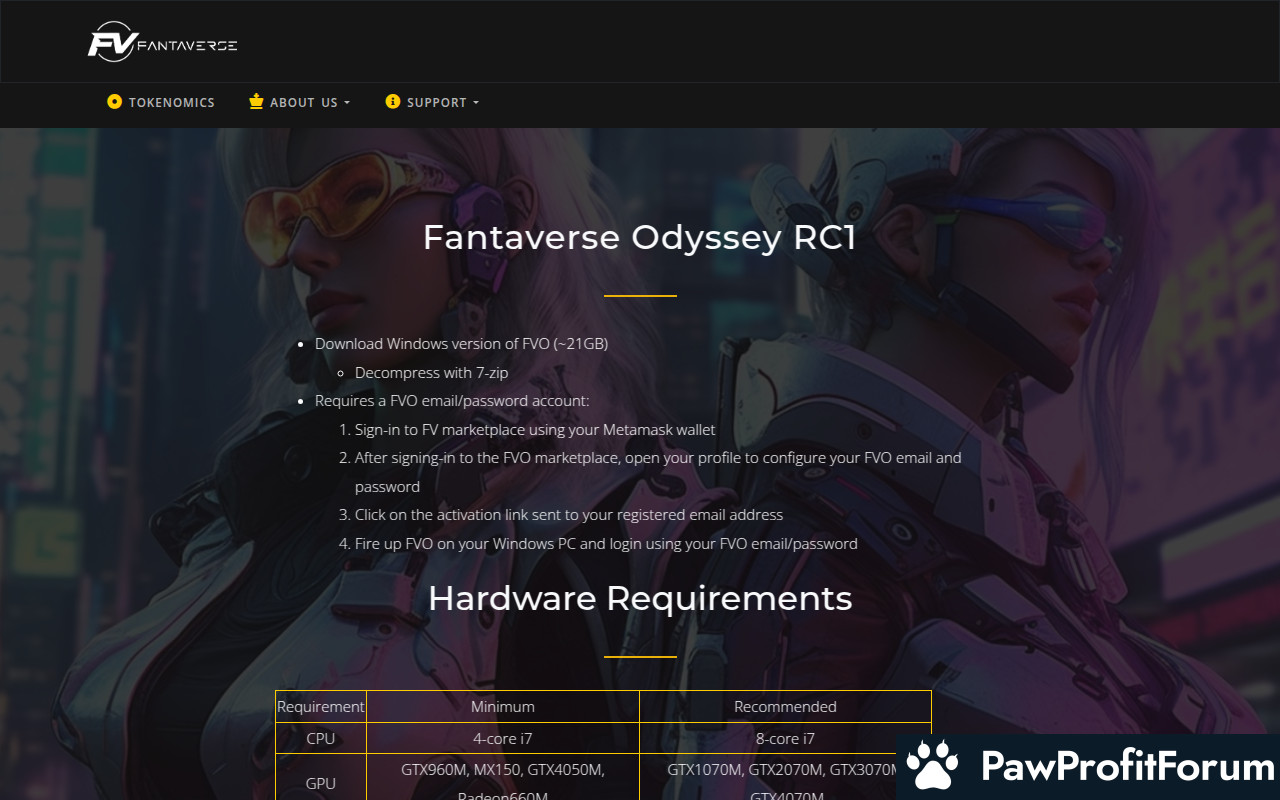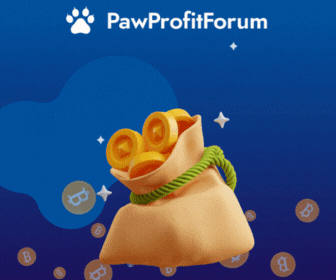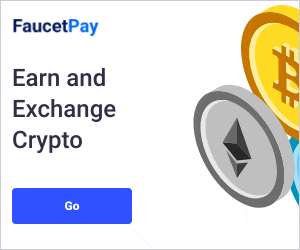FantaVerse is a Web 3.0 metaverse gaming world inspired by the legendary sci-fi movie, READY PLAYER ONE. FantaVerse will be grand like the movie's OASIS but with infinite cosmic space and countless planets where players can play different games and experience life on each planet.
Players can explore 480 planets, each divided into different classes for various functions, enhancing the diversity of gameplay and social interactions. The platform encourages virtual socialization and integrates seamlessly with AR, VR, and MR hardware, providing a low-latency, immersive experience. The recent release of its Beta version marks a significant milestone in its development.
Fantaverse also empowers players to create their own planets using the FantaEditor, fostering creativity and personalization within the metaverse. The team behind Fantaverse is dedicated to continuous improvement, with a clear roadmap for future updates and enhancements. This focus on innovation and player empowerment sets Fantaverse apart in the evolving landscape of metaverse gaming platforms.
The backbone of Fantaverse's technology is its use of blockchain, specifically a combination of Ethereum and Binance Smart Chain. These blockchains are renowned for their robust security features and decentralized nature. By utilizing these blockchains, Fantaverse ensures that all transactions and interactions within its ecosystem are transparent, immutable, and secure. This decentralized approach prevents any single point of failure, making it difficult for bad actors to compromise the system.
Blockchain technology in Fantaverse employs a consensus mechanism to validate transactions. Ethereum uses a Proof of Stake (PoS) consensus mechanism, which requires validators to hold and stake a certain amount of cryptocurrency to participate in the network. This staking process makes it economically unfeasible for malicious entities to attack the network, as they would need to control a significant portion of the total staked assets. Binance Smart Chain, on the other hand, uses a Proof of Staked Authority (PoSA) consensus mechanism, combining elements of both PoS and Proof of Authority (PoA), further enhancing security and efficiency.
In addition to blockchain, Fantaverse incorporates NFT (Non-Fungible Token) assets, which are unique digital items that can represent in-game assets, characters, or even virtual real estate. These NFTs are stored on the blockchain, ensuring their scarcity, ownership, and provenance. Players can trade, sell, or use these NFTs within the Fantaverse ecosystem, adding a layer of economic interaction and value to the gaming experience.
Fantaverse also utilizes its native token, UT, for on-chain payments and trading props. This token facilitates transactions within the ecosystem, allowing players to purchase in-game items, access exclusive content, or participate in various activities. The use of UT ensures a seamless and integrated economic system within Fantaverse, enhancing the overall user experience.
The integration of cloud technology in Fantaverse allows for scalable and flexible infrastructure, supporting the vast and dynamic virtual world. This technology ensures that the platform can handle a large number of concurrent users and complex interactions without compromising performance or user experience. Cloud technology also enables continuous updates and improvements, ensuring that Fantaverse remains at the forefront of innovation.
Fantaverse's decentralized metaverse ecosystem for gaming offers players the opportunity to explore infinite cosmic space and countless planets, each with its unique games and experiences. This vast and diverse environment is made possible through the combination of blockchain, NFTs, and cloud technology, creating a rich and engaging digital universe.
The security of Fantaverse is further enhanced by smart contracts, which are self-executing contracts with the terms of the agreement directly written into code. These smart contracts automate various processes within the ecosystem, reducing the need for intermediaries and minimizing the risk of human error or manipulation. By leveraging smart contracts, Fantaverse ensures that all transactions and interactions are executed fairly and transparently.
Fantaverse's technology also includes advanced graphics and immersive experiences, drawing inspiration from the grand vision of "READY PLAYER ONE." The platform aims to provide a visually stunning and engaging environment where players can fully immerse themselves in the virtual world. This is achieved through the use of state-of-the-art graphics engines and virtual reality (VR) technology, creating a truly captivating experience.
The combination of these technologies—blockchain, NFTs, cloud infrastructure, smart contracts, and advanced graphics—positions Fantaverse as a pioneering force in the metaverse gaming space. By offering a secure, transparent, and immersive environment, Fantaverse provides players with endless opportunities for exploration, interaction, and economic engagement.
One of the standout applications of Fantaverse is its ability to address common industry problems such as low graphic quality, limited device availability, and small game client sizes. By leveraging blockchain technology, Fantaverse ensures high-quality graphics and seamless gameplay across various devices, making it accessible to a broader audience.
In addition to gaming, Fantaverse incorporates a robust social system where players can communicate and collaborate. This social system is designed to reward players for their contributions to the ecosystem, whether through gameplay, content creation, or other forms of participation. These rewards can be earned in the form of tokens, enhancing the overall user experience and fostering a vibrant community.
Fantaverse also has potential applications beyond gaming. In the finance sector, it could facilitate secure and transparent transactions within the metaverse. In supply chain management, it could offer traceability and efficiency improvements by utilizing blockchain's immutable ledger. These applications highlight the versatility of Fantaverse and its potential to impact various industries.
As the project continues to develop, it is projected to have a significant impact on the global economy, with a potential market size of $100 billion by 2030. This growth indicates that Fantaverse may offer even more use cases and opportunities in the future, making it a noteworthy player in the evolving landscape of digital ecosystems.
One of the pivotal moments for Fantaverse was the release of its Beta version. This event marked a significant milestone, allowing users to explore the initial features and functionalities of the metaverse. The Beta release provided valuable feedback from early adopters, which was crucial for refining the platform.
Another major event was the listing of Fantaverse on Huobi. This listing increased the visibility and accessibility of Fantaverse's Universal Token (UT), enabling a broader audience to participate in the ecosystem. The listing on a prominent exchange like Huobi also added a layer of credibility and trust to the project.
Fantaverse also conducted an airdrop event for its Universal Token (UT). This event was designed to distribute tokens to a wider audience, incentivizing participation and engagement within the community. Airdrops are a common strategy in the cryptocurrency space to boost awareness and adoption, and Fantaverse leveraged this effectively.
The development and release of the Fantaverse whitepaper provided a comprehensive overview of the project's vision, technical architecture, and roadmap. The whitepaper served as a foundational document, detailing the innovative aspects of the metaverse and its potential impact on the gaming and blockchain industries.
In addition to these events, Fantaverse has been active on social media platforms like Twitter, where it regularly updates its community on progress, partnerships, and upcoming features. This engagement helps maintain a strong connection with its user base and keeps the community informed about the latest developments.
Fantaverse's journey is characterized by strategic milestones that have collectively contributed to its growth and evolution. The combination of technological advancements, strategic listings, community engagement, and transparent communication has positioned Fantaverse as a notable player in the metaverse and blockchain gaming space.
What is Fantaverse?
Fantaverse (UT) is a Web 3.0 metaverse gaming world inspired by the legendary sci-fi movie "READY PLAYER ONE." This immersive platform aims to replicate the grandeur of the movie's OASIS, offering infinite cosmic space and countless planets where players can engage in various games and experiences. At its core, Fantaverse leverages blockchain technology and cryptocurrency to create a decentralized gaming ecosystem.Players can explore 480 planets, each divided into different classes for various functions, enhancing the diversity of gameplay and social interactions. The platform encourages virtual socialization and integrates seamlessly with AR, VR, and MR hardware, providing a low-latency, immersive experience. The recent release of its Beta version marks a significant milestone in its development.
Fantaverse also empowers players to create their own planets using the FantaEditor, fostering creativity and personalization within the metaverse. The team behind Fantaverse is dedicated to continuous improvement, with a clear roadmap for future updates and enhancements. This focus on innovation and player empowerment sets Fantaverse apart in the evolving landscape of metaverse gaming platforms.
What is the technology behind Fantaverse?
Fantaverse, a Web 3.0 metaverse gaming world inspired by the legendary sci-fi movie "READY PLAYER ONE," leverages cutting-edge technology to create an expansive and immersive digital universe. At its core, Fantaverse integrates leading-edge cloud technology, blockchain integration, and NFT assets to provide a seamless and secure gaming experience.The backbone of Fantaverse's technology is its use of blockchain, specifically a combination of Ethereum and Binance Smart Chain. These blockchains are renowned for their robust security features and decentralized nature. By utilizing these blockchains, Fantaverse ensures that all transactions and interactions within its ecosystem are transparent, immutable, and secure. This decentralized approach prevents any single point of failure, making it difficult for bad actors to compromise the system.
Blockchain technology in Fantaverse employs a consensus mechanism to validate transactions. Ethereum uses a Proof of Stake (PoS) consensus mechanism, which requires validators to hold and stake a certain amount of cryptocurrency to participate in the network. This staking process makes it economically unfeasible for malicious entities to attack the network, as they would need to control a significant portion of the total staked assets. Binance Smart Chain, on the other hand, uses a Proof of Staked Authority (PoSA) consensus mechanism, combining elements of both PoS and Proof of Authority (PoA), further enhancing security and efficiency.
In addition to blockchain, Fantaverse incorporates NFT (Non-Fungible Token) assets, which are unique digital items that can represent in-game assets, characters, or even virtual real estate. These NFTs are stored on the blockchain, ensuring their scarcity, ownership, and provenance. Players can trade, sell, or use these NFTs within the Fantaverse ecosystem, adding a layer of economic interaction and value to the gaming experience.
Fantaverse also utilizes its native token, UT, for on-chain payments and trading props. This token facilitates transactions within the ecosystem, allowing players to purchase in-game items, access exclusive content, or participate in various activities. The use of UT ensures a seamless and integrated economic system within Fantaverse, enhancing the overall user experience.
The integration of cloud technology in Fantaverse allows for scalable and flexible infrastructure, supporting the vast and dynamic virtual world. This technology ensures that the platform can handle a large number of concurrent users and complex interactions without compromising performance or user experience. Cloud technology also enables continuous updates and improvements, ensuring that Fantaverse remains at the forefront of innovation.
Fantaverse's decentralized metaverse ecosystem for gaming offers players the opportunity to explore infinite cosmic space and countless planets, each with its unique games and experiences. This vast and diverse environment is made possible through the combination of blockchain, NFTs, and cloud technology, creating a rich and engaging digital universe.
The security of Fantaverse is further enhanced by smart contracts, which are self-executing contracts with the terms of the agreement directly written into code. These smart contracts automate various processes within the ecosystem, reducing the need for intermediaries and minimizing the risk of human error or manipulation. By leveraging smart contracts, Fantaverse ensures that all transactions and interactions are executed fairly and transparently.
Fantaverse's technology also includes advanced graphics and immersive experiences, drawing inspiration from the grand vision of "READY PLAYER ONE." The platform aims to provide a visually stunning and engaging environment where players can fully immerse themselves in the virtual world. This is achieved through the use of state-of-the-art graphics engines and virtual reality (VR) technology, creating a truly captivating experience.
The combination of these technologies—blockchain, NFTs, cloud infrastructure, smart contracts, and advanced graphics—positions Fantaverse as a pioneering force in the metaverse gaming space. By offering a secure, transparent, and immersive environment, Fantaverse provides players with endless opportunities for exploration, interaction, and economic engagement.
What are the real-world applications of Fantaverse?
Fantaverse (UT) is a Web 3.0 metaverse gaming world inspired by the legendary sci-fi movie, "READY PLAYER ONE." It aims to create a decentralized metaverse ecosystem that offers low latency gameplay, virtual socialization, and integration with AR/VR/MR hardware. This immersive environment allows players to explore infinite cosmic spaces and countless planets, each offering unique gaming experiences and life simulations.One of the standout applications of Fantaverse is its ability to address common industry problems such as low graphic quality, limited device availability, and small game client sizes. By leveraging blockchain technology, Fantaverse ensures high-quality graphics and seamless gameplay across various devices, making it accessible to a broader audience.
In addition to gaming, Fantaverse incorporates a robust social system where players can communicate and collaborate. This social system is designed to reward players for their contributions to the ecosystem, whether through gameplay, content creation, or other forms of participation. These rewards can be earned in the form of tokens, enhancing the overall user experience and fostering a vibrant community.
Fantaverse also has potential applications beyond gaming. In the finance sector, it could facilitate secure and transparent transactions within the metaverse. In supply chain management, it could offer traceability and efficiency improvements by utilizing blockchain's immutable ledger. These applications highlight the versatility of Fantaverse and its potential to impact various industries.
As the project continues to develop, it is projected to have a significant impact on the global economy, with a potential market size of $100 billion by 2030. This growth indicates that Fantaverse may offer even more use cases and opportunities in the future, making it a noteworthy player in the evolving landscape of digital ecosystems.
What key events have there been for Fantaverse?
Fantaverse, a Web 3.0 metaverse gaming world inspired by the legendary sci-fi movie "READY PLAYER ONE," has seen several key events shaping its journey. The platform aims to create an expansive universe with infinite cosmic space and countless planets, offering diverse gaming experiences.One of the pivotal moments for Fantaverse was the release of its Beta version. This event marked a significant milestone, allowing users to explore the initial features and functionalities of the metaverse. The Beta release provided valuable feedback from early adopters, which was crucial for refining the platform.
Another major event was the listing of Fantaverse on Huobi. This listing increased the visibility and accessibility of Fantaverse's Universal Token (UT), enabling a broader audience to participate in the ecosystem. The listing on a prominent exchange like Huobi also added a layer of credibility and trust to the project.
Fantaverse also conducted an airdrop event for its Universal Token (UT). This event was designed to distribute tokens to a wider audience, incentivizing participation and engagement within the community. Airdrops are a common strategy in the cryptocurrency space to boost awareness and adoption, and Fantaverse leveraged this effectively.
The development and release of the Fantaverse whitepaper provided a comprehensive overview of the project's vision, technical architecture, and roadmap. The whitepaper served as a foundational document, detailing the innovative aspects of the metaverse and its potential impact on the gaming and blockchain industries.
In addition to these events, Fantaverse has been active on social media platforms like Twitter, where it regularly updates its community on progress, partnerships, and upcoming features. This engagement helps maintain a strong connection with its user base and keeps the community informed about the latest developments.
Fantaverse's journey is characterized by strategic milestones that have collectively contributed to its growth and evolution. The combination of technological advancements, strategic listings, community engagement, and transparent communication has positioned Fantaverse as a notable player in the metaverse and blockchain gaming space.
Who are the founders of Fantaverse?
Fantaverse (UT) is a Web 3.0 metaverse gaming world inspired by the sci-fi movie "READY PLAYER ONE," offering a vast cosmic space with numerous planets for diverse gaming experiences. The minds behind Fantaverse are Henry Astley, Albert Kek, and Julian Chang. Henry Astley, known for his expertise in blockchain technology, played a pivotal role in the technical development of Fantaverse. Albert Kek, with a background in game design and development, contributed significantly to the creative aspects. Julian Chang, a seasoned entrepreneur, focused on strategic partnerships and business development. Their combined efforts have shaped Fantaverse into a unique metaverse platform.| Website | www.fantaverse.io/ |
| Website | www.fantaverse.io/whitepaper/index.html |
| Socials | twitter.com/FantaVerse_FTC |
| Socials | t.me/FantaverseEnglish |
| Contracts | 0x39dC...1518bf |
| Audits | https://cmc.certik-skynet.com/redirect?project=fantaverse |
| Explorers | bscscan.com/token/0x39dc1f91fee49c03a0db558254707116101518bf |










